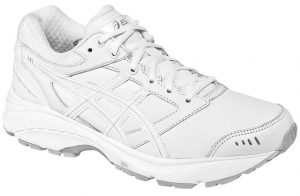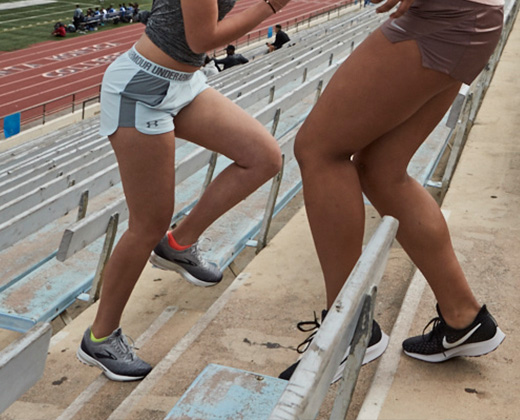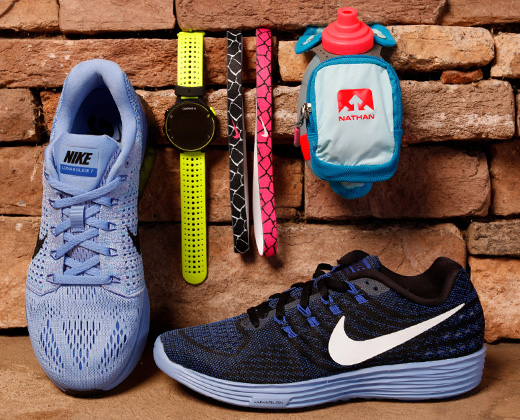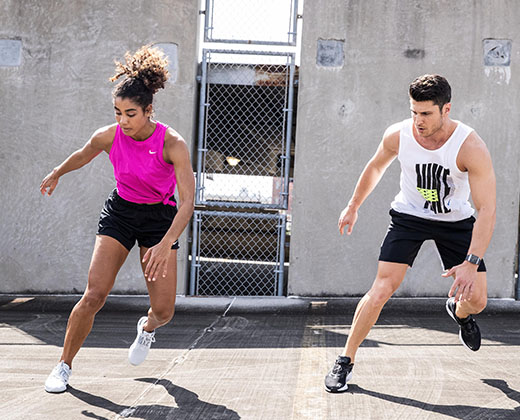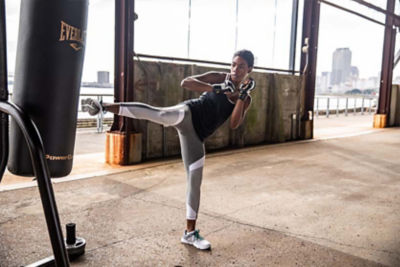Finding The Right Walking Shoes
The foot mechanics of walking are different from running or aerobics—and you need a walking shoe that supports your step. Think about these factors when making your selection.
July 01, 2015

FINDING THE RIGHT WALKING SHOES
Find comfortable, functional walking shoes that take you where you need to go.
Heel Construction
- Walking shoes have a low-profile heel with a slight bevel on the lateral (outer) side of the heel to steady the foot and ankle. This prepares the foot for roll-through and promotes an efficient foot strike.
- The heel on a walking shoe should be specially designed to accommodate the natural roll-through motion of walking
- Walking is a low-impact activity, so shock absorption is not a key factor in your walking shoes.
Cushioning & Heel Height
- Walking shoes have low heel profiles because walkers need less heel cushioning than runners
- Most walking shoes will have a relatively low midsole profile since a walker's cushioning needs are only moderate
- Heel counter--This is a plastic or composite material used to reinforce the heel area and increase stability. It will keep your foot snugly in place and centered in your shoe as you walk.
Flexibility
A walker's foot flexes more than a runner's during toe-off, therefore the make-up and construction of a walking shoe must allow for this flexibility.
Flex Grooves
- Cut horizontally across the forefoot of the outsole or bottom of the shoe, allowing the foot to bend and flex properly
- In shoes without flex grooves, the outsole materials should be flexible
Upper materials
- Walking shoe uppers are sturdy enough to be supportive but are also breathable and lightweight
- All-leather shoes are the sturdiest and most stable, but they are heavier and less breathable
- Shoes that combine leather and lightweight, breathable, synthetic mesh materials offer both durability and breathability and are typically more lightweight
Toe Box
- Walking shoes offer more room in the toe box to allow your toes to flex up during heel plant and spread out and flex during the toe-off portion
- A toe box that is too small will restrict the muscles and tendons in the foot and lead to pain and cramping
- As a general rule, you should have about half-inch (about a thumb's width) between your longest toe and the front of the shoe and half -inch between your longest toe and the top of the shoe
WHEN TO BUY NEW WALKING SHOES
- The easiest way to tell if you need new walking shoes is to look at the soles. If they are worn out or unevenly worn, they should be replaced.
- Walking shoes should be replaced every 500 miles, or every six months, mainly due to the breakdown in cushioning that occurs
- If you are wearing your walking shoes for activities besides fitness walking, those miles count, too
Searching for the right size? Look for the True Fit icon on apparel and footwear product pages when shopping online at DICK’S Sporting Goods. Get personalized size and fit recommendations with just a few clicks. Learn more about True Fit.


